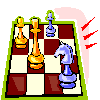 |
|
|
|
|
|
|
Author:
Sylvia Henderson
|
|
|
Providing the people, programs, and resources that build knowledge, develop skills, and shape attitudes on professionalism, work ethics, and leadership in a diverse workforce.
|
|
|
 |
|
|
|
© Sylvia Henderson. Springboard Training. All rights reserved.
These syndicated columns are available for your publication by contacting the author at the e-mail link on the left side of this page, or by the contact information listed.
** NOT FOR REPRODUCTION OR DISTRIBUTION in any form or format, at any time, without written permission from the author. **
|
|
|
 |
 |
|
 |
|
Power Positioning
The basic skills involved in riding a motorcycle involve balance, coordinating hands and feet (shifting and stopping), signaling and maneuvering. A finer skill mastered by an experienced rider involves positioning. For example, turning into a curve involves basic skills that enable the rider to complete the curve successfully, still upright on the bike and accelerating forward. Finer positioning at specific spots along the curve results in a more efficient, more powerful curve maneuver.
Where you position yourself when you interact with people can give you a perceived advantage of power. The following examples are ways in which you use your physical positioning to communicate power and authority.
Stand while the other person sits. Sit at a desk or table across from the other person (rather than beside them). Position yourself at the center of a rectangular or oblong table. (Observe where the President of the United States sits in a briefing on a television show such as the early-2000 series “West Wing”—or how a business executive places him/herself at a conference table.) Lean towards the other person. If they make the slightest move away from you, you claim the power position. When you shake hands, slightly turn your wrist so that your hand is more on top of the other person’s hand.
Become familiar with subtle aspects of positioning and non-verbally communicate an authoritative power presence.
|
|
|
 |
|
|


